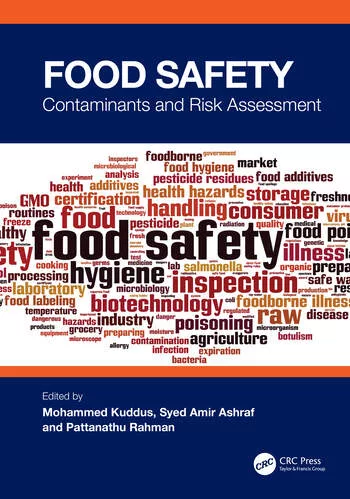Why Supply Chain Transparency is More Important Than Ever

Food quality and safety risks are at the forefront of many consumers’ minds, thanks to the spate of recent food contamination incidents in the U.S. Improved food quality and transparency have become increasingly important to many manufacturers as consumers increasingly seek these qualities in the food they buy. Social media has raised the bar too, making it far too easy for consumers to force transparency on manufacturers who do not embrace this movement in a way doesn’t always reflect well on them.
Of course, these channels also provide an opportunity for brands to build new brand equity with consumers by demonstrating the qualities consumers seek—transparency and openness. In addition, new technology solutions, powered by the Industrial Internet, are becoming prevalent within food manufactures to help deliver on these qualities.
FSMA Means More Transparency
Due to the expansion and innovation in production and processing, food manufacturers continue to face challenges managing food safety. In addition to satisfying consumer demand for increased transparency, it is becoming increasingly regulated and required by the U.S. Food and Drug Administration as part of the Food Safety Modernization Act (FSMA). FSMA will require food manufacturers to increase their focus on prevention rather than response to contamination incidents, which will require a comprehensive view of the entire supply chain, something many food suppliers struggle with in today’s global economy.
Without the ability to track and trace through the entire supply chain, it is impossible to ensure that contamination has not occurred at some point in the process, whether it was before or after the food has left the manufacturing facility. By utilizing technology like big data analytics, track and trace, and intelligent supply chain mapping, food suppliers can increase the transparency of the supply chain.
A fully transparent supply chain extends visibility and enables a true farm-to-fork view of the path supplies and end products taken to the customer, assuring both the manufacturer and the consumer that every step of the chain has conformed to both FSMA guidelines and best practices for safety and minimized the potential for contamination.
Building and Maintaining Customer Trust
While manufacturers will have the ability to pinpoint the cause of contamination with increased supply chain transparency, the consumer will always blame the supplier regardless of the true source of contamination. In today’s social media and 24-hour news cycle, a single contamination incident can make national headlines within hours. The reputational and financial consequences can be devastating when consumers’ trust has been lost.
Consumer trust is more important than ever, with customer brand loyalty at all-time low and the rapidly increasing “switching economy,” which has grown to $1.7 trillion according to the Accenture Customer 2020 study. The decrease in brand loyalty only magnifies the impact when the food safety process breaks down and recalls are issued or customers get sick from contaminated products.
While not every customer will be interested in farm-to-fork traceability, the ability to show transparency in the supply chain following a recall is one of the best ways to minimize the impact and loss of consumer trust. Publicly pinpointing the source of the contamination and effectively demonstrating the steps taken to ensure the cause has been rectified allows the supplier to rebuild that trust and display the ability to help prevent future outbreaks.
Establishing Brand Equity
When food manufacturers build a fully transparent supply chain and give customers access to information about where their food has been, what ingredients were used and how fresh it is, they build brand equity. “Eat local” is a growing trend for a reason—a growing number of customers want to feel invested in the source of their food. While it is impractical for every food product to be produced and distributed locally, pulling back the curtain and becoming more transparent about the origin and routes food takes to the table enables food manufacturers to build the same type of equity in their international brands as local products.
Building this brand equity requires not only the technological ability to have a transparent supply chain, but also the motivation and willingness to provide the customer with that information as a common practice and not just when there is a contamination incident. This may seem to be too much of a hassle for food manufacturers, but more public transparency will help increase a brand’s value as customers appreciate the steady flow of information and become more loyal to the brand itself.
Conclusion
Transparency in the supply chain is no longer just a matter of ensuring efficiency and productivity; it is a regulated and market-driven necessity. Both U.S. and international food safety standards require the ability to prevent contamination before it happens and the impact of recalls is at an all-time high due to today’s media environment. The need to utilize emerging technologies to provide an accurate and comprehensive view into the supply chain is evident.
By utilizing new technologies like big data analysis, intelligent supply chain mapping and tracing technologies, food manufacturers can satisfy both regulatory and customer demands by transforming the control and oversight they have over the entire supply chain from farm-to-fork. With end-to-end transparency, food manufacturers can maintain fleeting customer trust loyalty and establish brand equity to stay one step ahead of the competition.
Katie Moore is the industry marketing manager for GE Digital’s Food and Beverage Manufacturing Practice. A former plant manager, Katie has managed plant operations for Bimbo Bakeries USA, Sara Lee Corporation and Anheuser-Busch. Katie can be reached at Katie.Moore@ge.com.
Looking for quick answers on food safety topics?
Try Ask FSM, our new smart AI search tool.
Ask FSM →








